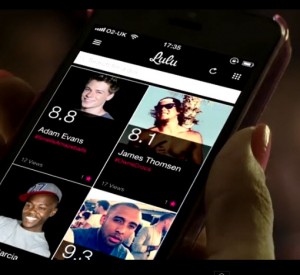The power of girl talk.
An ex-CFO colleague of mine just joined a web startup called Lulu. It’s a mobile app for girls and, smartly, anyone who wants to be. Check out the video to see what it’s all about. It’s kind of sexually charged and hook-up focused.
I often write about the branding Is-Does — what a brand is and what a brand does. The ability for start-ups to articulate the Is-Does is often a deal breaker – especially for VCs. You may be a great technologist but if your packaging and marketing acumen are lacking, it’s hard to get traction.
The reason videos are so prevalent in web marketing today is they’re a good way to stuff 10 lbs. of shizz in a 5 lb. bag. Back in the day, the montage was the art form of choice: We do this, this, this and this.
It’s a rarity that a tagline can capture the Is-Does in one line. “The power of girl talk” is just that line. (If not Lulu’s tag, it should be.) So good job on the app and the Is-Does Lulu!
One of my joke lines as a kid was that I always wanted to experience real girl talk. I said, as a kid. Girl talk is a thing. And Lulu, it’s developers and biz people get it.
Lulu is going to be big. Peace!


